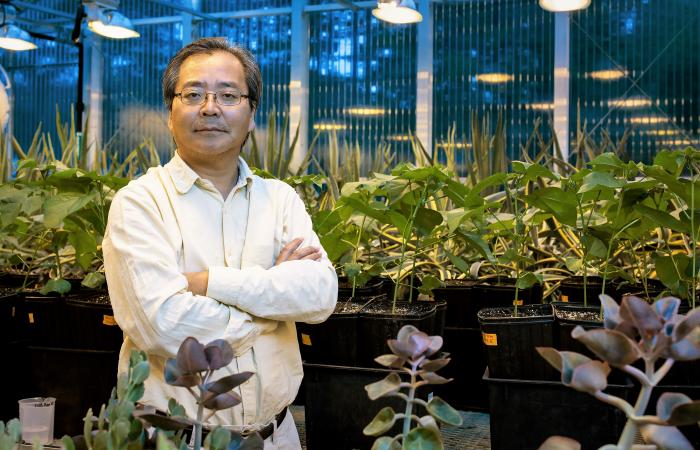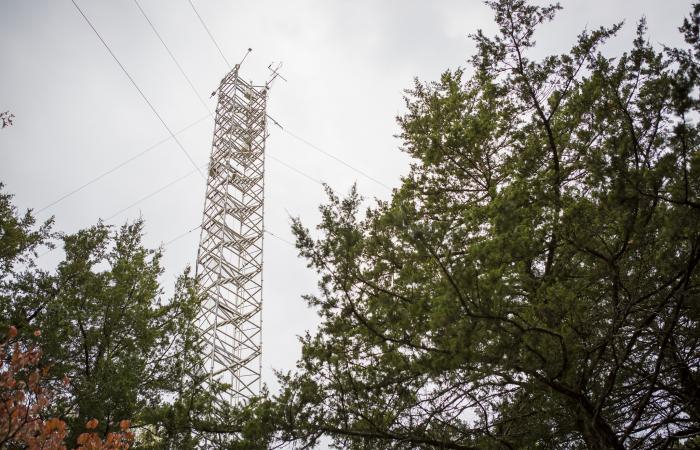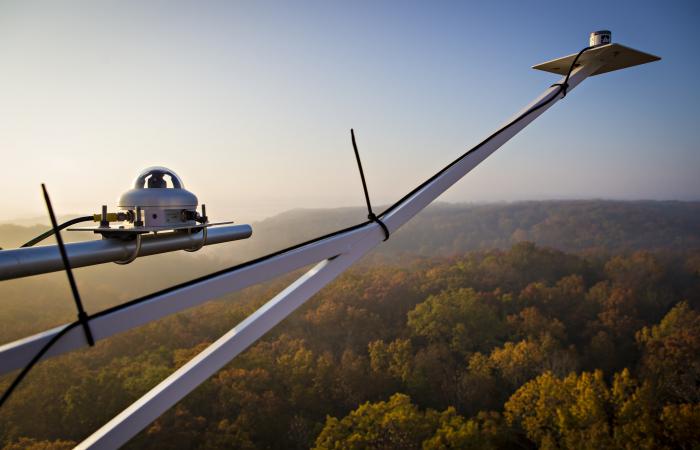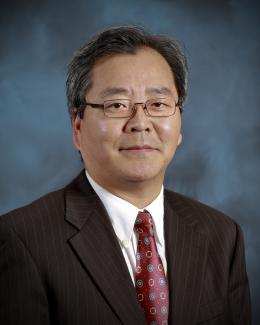November 28, 2017 — Photosynthesis is one of the most important processes on Earth. Without it the food chain would collapse, and we would lose a primary source of oxygen for all life. Yet it is a process that is still poorly understood outside the laboratory.
With the help of an Oak Ridge National Laboratory (ORNL) researcher who has been studying photosynthesis at canopy height, scientists from NASA’s Jet Propulsion Laboratory and other institutions have discovered a way to observe the process on a global scale, with implications for research in areas such as crop yield, drought response, and carbon cycle modeling.
During photosynthesis, plants convert the pure energy of sunlight into chemical energy. A byproduct of that process is fluorescence emitted when solar energy is absorbed by chlorophyll molecules in plant leaves. Researchers can use solar-induced fluorescence measurements to estimate plant photosynthesis.
The successful test of a modified sensor array onboard the NASA Orbiting Carbon Observatory-2 (OCO-2) satellite means scientists have for the first time been able to observe plant fluorescence at high resolution from space, as detailed in a recent article in the journal Science.
The plant fluorescence captured by OCO-2 was verified to be closely related to canopy photosynthesis estimated from the ground with the help of Lianhong Gu, an ORNL researcher in the Environmental Sciences Division.
Gu and his collaborators developed the FAME, or Fluorescence Auto-Measurement Equipment platform, to study plant fluorescence at the Missouri Ozark Ameriflux site, a Department of Energy-supported experimental station where scientists use instruments on a 106-foot tower to measure carbon and water balance on a large scale in the region’s oak-hickory forests.
The task of measuring forest fluorescence is a difficult one, Gu noted, since it is a relatively weak natural signal. Plants not only absorb sunlight, but also reflect it, and the reflection of sunlight by plants and ground interferes with the measurement of fluorescence. The FAME instrument is capable of seeing the fluorescent signal against the natural background.
To accomplish fluorescence measurements from space, the scientists used high-resolution spectrometers, which provide very fine detail of the scanned area. So detailed, in fact, that fluorescence between plant types is readily apparent in a scan across the land surface. For instance, the fluorescence from croplands where plants were in the process of actively growing far exceeded that from mature urban forests. That level of precision means the OCO-2 platform has the capability to capture real-time photosynthetic activity, Gu noted.
To verify the measurements, the scientists coordinated the space-based OCO-2 data with measurements taken from similar instruments mounted on airplanes flying below the satellite—a first for satellite observations of fluorescence.
Moreover, by combining the measurements taken from the satellite with ground-based measurements, scientists are able to estimate the amount of carbon dioxide fixed by plants, known as gross primary production, at a larger scale than ever before. That knowledge can greatly improve carbon cycle modeling, including predictions of what may happen to atmospheric CO2 levels in a changing environment—one of the aims of the Climate Change Science Institute at ORNL. Scientists could also leverage better measurements of photosynthesis to further ORNL’s research into bioenergy crops, Gu said.
The next step for satellite observation will be to design high sensitivity instruments that can measure the full spectrum of fluorescence vs. the few isolated wavelengths measured in this project, Gu noted.
“It’s very important to understand photosynthesis at the plant level, the canopy level, the regional level, and the global level,” Gu said. “Even though photosynthesis is so important to all life on earth, we don’t understand it well at large scales. Once we get that understanding, we can manipulate the process to do what we want—to produce more crops for biofuels, for instance.”
The Department of Energy’s Office of Science, Biological and Environmental Research Program supports Gu’s work through ORNL’s Terrestrial Ecosystem Science - Scientific Focus Area.
ORNL is managed by UT-Battelle for DOE’s Office of Science, the single largest supporter of basic research in the physical sciences in the United States. DOE’s Office of Science is working to address some of the most pressing challenges of our time. For more information, please visit http://energy.gov/science. —by Stephanie Seay






